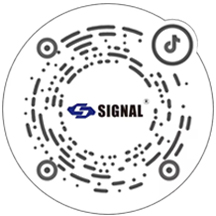Connectors are pivotal in electronic systems, serving as the critical interface for transmitting power, signals, and data across various components. Their performance and quality directly influence the safety and reliability of entire systems. Given the vast array of connectors available, understanding their classifications and selection criteria is essential for optimal system integration.
Common Connector Classifications
Connectors can be categorized based on several criteria:
1. Connection Method:
o Crimp Type: Involves compressing a metal sleeve around the wire and contact, ensuring a secure connection.
o Screw Lock Type: Utilizes screws to fasten the connector, providing robust mechanical stability.
o
o Solder Type: Requires soldering the wire directly to the connector's contact, offering a permanent bond.
2. Signal Transmission Type:
o Power Connectors: Designed for transmitting electrical power between components.
o Signal Connectors: Facilitate the transfer of data or control signals.
o High-Frequency Connectors: Engineered for data transmission at high frequencies, often used in communication systems.
3. Application Direction:
o RF Connectors: Used for radio frequency signal connections, common in communication devices.
o Fiber Optic Connectors: Enable the connection of optical fibers for high-speed data transmission.
o Non-Contact Connectors: Employ magnetic or capacitive coupling to transfer signals without physical contact.
4. Shape:
o Circular Connectors: Feature a cylindrical design, offering durability and ease of coupling.
o Rectangular Connectors: Provide a compact form factor, often used in space-constrained applications.
Key Considerations for Connector Selection
Selecting the appropriate connector involves evaluating multiple factors:
· Electrical Requirements: Ensure the connector can handle the required voltage and current levels without compromising performance.
· Mechanical Properties: Assess the connector's size, mating cycles, and coupling mechanisms to match the application's physical constraints.
· Environmental Conditions: Consider exposure to moisture, temperature variations, and contaminants. Connectors with appropriate Ingress Protection (IP) ratings are essential for harsh environments.
· Compatibility: Verify that the connector interfaces seamlessly with existing system components to maintain signal integrity and system functionality.
Given the complexity and interdependence of these factors, making an informed connector selection is crucial. Shenzhen SIGNAL offers a comprehensive range of connectors tailored to diverse applications. Our team is dedicated to assisting you in choosing the right connector to meet your specific requirements. For personalized guidance and to explore our product offerings, please contact our sales team at sales@sz-signal.com.

Product Page






